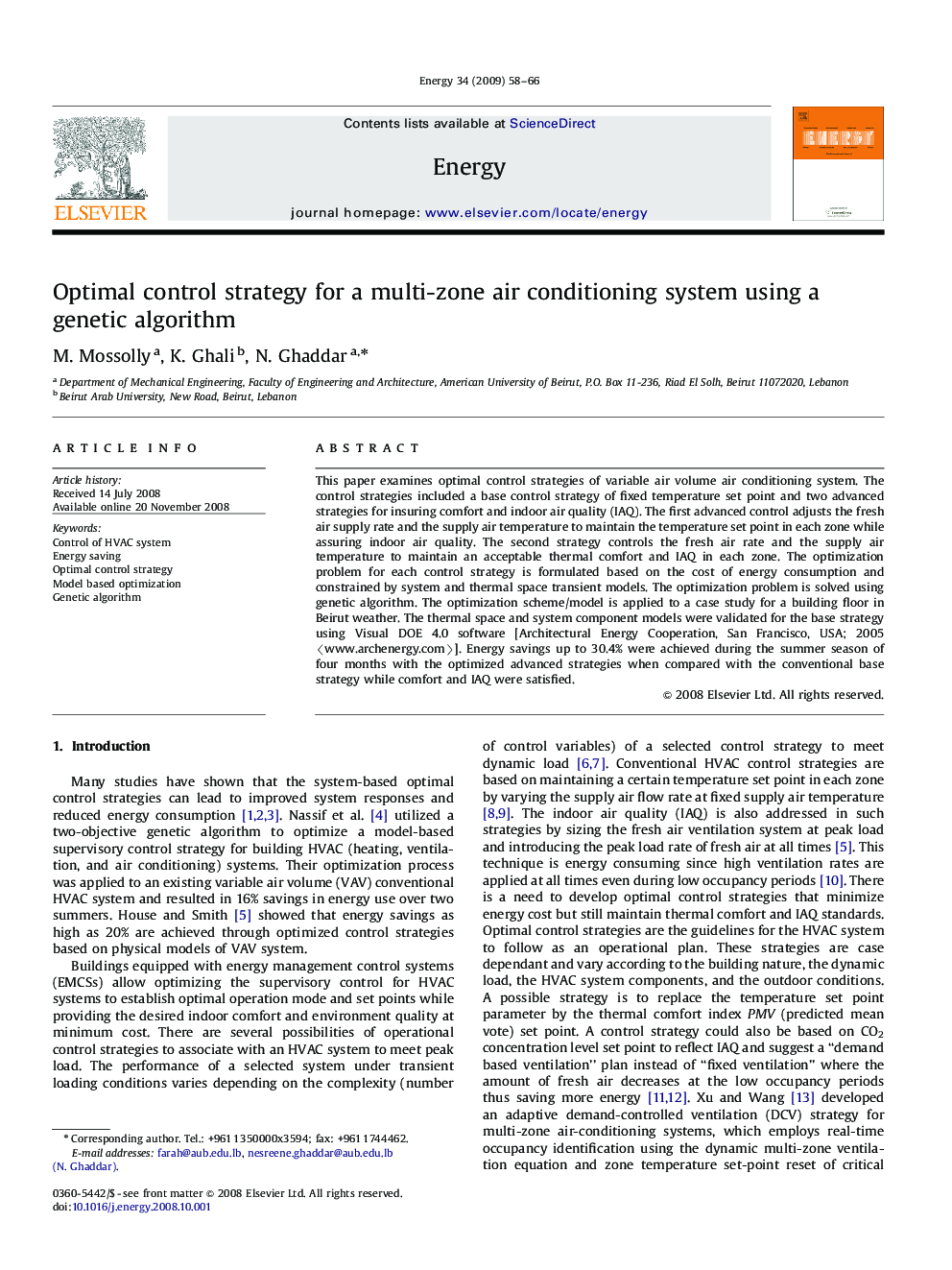| Article ID | Journal | Published Year | Pages | File Type |
|---|---|---|---|---|
| 1735924 | Energy | 2009 | 9 Pages |
This paper examines optimal control strategies of variable air volume air conditioning system. The control strategies included a base control strategy of fixed temperature set point and two advanced strategies for insuring comfort and indoor air quality (IAQ). The first advanced control adjusts the fresh air supply rate and the supply air temperature to maintain the temperature set point in each zone while assuring indoor air quality. The second strategy controls the fresh air rate and the supply air temperature to maintain an acceptable thermal comfort and IAQ in each zone. The optimization problem for each control strategy is formulated based on the cost of energy consumption and constrained by system and thermal space transient models. The optimization problem is solved using genetic algorithm. The optimization scheme/model is applied to a case study for a building floor in Beirut weather. The thermal space and system component models were validated for the base strategy using Visual DOE 4.0 software [Architectural Energy Cooperation, San Francisco, USA; 2005 〈www.archenergy.com〉]. Energy savings up to 30.4% were achieved during the summer season of four months with the optimized advanced strategies when compared with the conventional base strategy while comfort and IAQ were satisfied.
